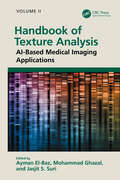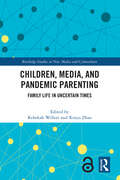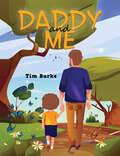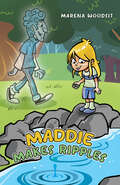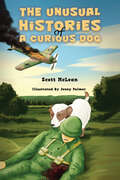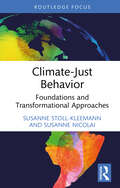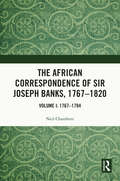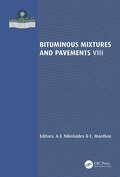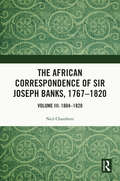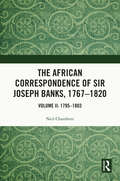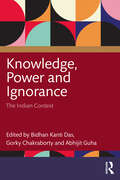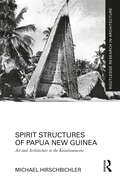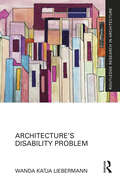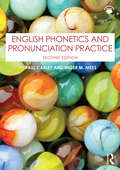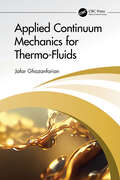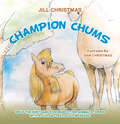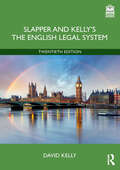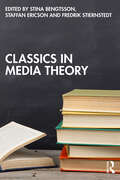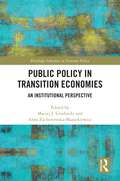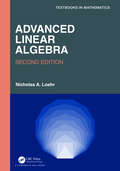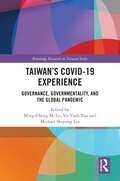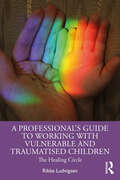- Table View
- List View
Handbook of Texture Analysis: AI-Based Medical Imaging Applications
by Jasjit S. Suri Ayman El-Baz Mohammed GhazalThe major goals of texture research in computer vision are to understand, model, and process texture and, ultimately, to simulate the human visual learning process using computer technologies. In the last decade, artificial intelligence has been revolutionized by machine learning and big data approaches, outperforming human prediction on a wide range of problems. In particular, deep learning convolutional neural networks (CNNs) are particularly well suited to texture analysis. This volume presents important branches of texture analysis methods which find a proper application in AI-based medical image analysis. This book: Discusses first-order, second-order statistical methods, local binary pattern (LBP) methods, and filter bank-based methods Covers spatial frequency-based methods, Fourier analysis, Markov random fields, Gabor filters, and Hough transformation Describes advanced textural methods based on DL as well as BD and advanced applications of texture to medial image segmentation Is aimed at researchers, academics, and advanced students in biomedical engineering, image analysis, cognitive science, and computer science and engineering This is an essential reference for those looking to advance their understanding in this applied and emergent field.
Children, Media, and Pandemic Parenting: Family Life in Uncertain Times (Routledge Studies in New Media and Cyberculture)
by Rebekah Willett Xinyu ZhaoThis book examines changes in families’ rules and routines connected with media during the pandemic and shifts in parents’ understanding of children’s media use.Drawing on interviews with 130 parents at the height of the COVID-19 pandemic, the book explores specific cultural contexts across seven countries: Australia, Canada, China, Colombia, South Korea, United Kingdom, and United States. Readers will gain an understanding of family media practices during the pandemic and how they were influenced by contextual factors such as the pandemic restrictions, family relationships and situations, socioeconomic statuses, cultural norms and values, and sociotechnical visions, among others. Further, encounter with theoretical framings will provide innovative ways to understand what it means for children, parents, and families to live in the digital age.This timely volume will offer key insights to researchers and graduate students studying in a variety of disciplines, including media and cultural studies, communication arts, education, childhood studies, and family studies.The Open Access version of this book, available at www.taylorfrancis.com, has been made available under a Creative Commons Attribution- Non Commercial- No Derivatives (CC- BY- NC- ND) 4.0 license.
Dyslexia – The Beginning
by Marie MeehanMum just told me I have dyslexia. She told me that while being dyslexic can mean reading and writing are more difficult for me then they are for others, there are other things that I will be ‘extra-awesome’ at. This is my mission log: ‘Finding my dyslexic superpowers!’
Daddy and Me
by Tim BurkeHow often is it that we take the time to stop and listen to what our children have to say or are trying to tell us in their actions and behaviour? These poems came about as result of time I spent with my son, playing with him, imagining with him, talking to him, and listening to him. I hope that they also touch the hearts of all parents and children who can recognise a little bit of themselves in the narration.
Maddie Makes Ripples
by Marena WoodsitLittle Maddie was having a bad day. She fought with her brother Charlie, her mother got upset, even her dog Jasper was sad because no one would play with him after all the ruckus. Sulking by the riverside Maddie was feeling sorry for herself.Then along came this strange and wonderful being named Sam, who picked up some pebbles and gave them to Maddie, and some very interesting things began to happen…
There Is Magic Everywhere!
by Jayne RabaiottiWhen a mother stops believing, it takes a wise old man to open up a magical world for a little girl to know that anything is possible when you believe. Look inside to find out what magic awaits you when you ignite your imagination and start believing. Come, open the door to the book and let your dreams twirl in a starry night sky, for there is magic everywhere when you believe.
The Unusual Histories of a Curious Dog
by Scott McLeanBiscuit is a precocious pup with an insatiable curiosity that often leads her to poke her nose where it doesn’t belong. When exploring the gardens of her new home, she stumbles upon what appears to be a rabbit hole and finds herself transported to the past. Thus begins a thrilling journey across the ages. With each trip down the rabbit hole into history, Biscuit must rely on her resourcefulness and befriend unlikely allies to overcome daunting obstacles and return to her family. But she soon discovers her time-traveling escapades have dredged up dark secrets that hang over her home, and her adventures have only just begun.
Climate-Just Behavior: Foundations and Transformational Approaches (Routledge Focus on Environment and Sustainability)
by Susanne Stoll-Kleemann Susanne NicolaiThis book highlights the obstacles to and potential for a just transformation as a way out of the current climate crisis.This volume examines the barriers, opportunities and incentives around the pursuit of climate-just behavior, based on a comprehensive interdisciplinary and integrative analysis. It investigates how the gap between expressing concern about the climate crisis and giving it a high priority within the context of everyday behavior can be overcome. At the same time, it looks at the challenging politico-economic framework conditions such as the strong economic growth and profit orientation of capitalism. Although justice is a fundamental human motive, which should induce climate-just behavior, system justification is common and makes people rather justify their unjust behavior. In this book, a general and systemic framework on human behavior is provided, including internal factors, such as knowledge and psychological needs, external factors, such as socio-cultural and politico-economic factors, feedback loops and interactions. The authors draw on multiple theories to examine how denial and moral disengagement affect individual responsibility, despite real-world evidence of the climate crisis. The book highlights the role of emotions in encouraging a pro-environmental response and discusses solutions on both the individual and the collective level, such as transparency laws. Moreover, making climate-friendly options more accessible, affordable and convenient facilitates behavior change more effectively. Overall, this book presents knowledge-based, realistic approaches to surmounting these obstacles in order to achieve a more climate-just world.Climate-Just Behavior will be of great interest to students and scholars of climate change, climate justice, environmental geography and environmental psychology.
The African Correspondence of Sir Joseph Banks, 1767–1820: Volume I: 1767–1794
by Neil ChambersThis edition brings together in three fully edited volumes the correspondence and associated papers of Sir Joseph Banks regarding European and especially British exploration of Africa from 1767–1820, for the first time publishing this globally scattered material in one place, thereby revolutionizing its availability and understanding of the activities of a key figure who helped organize and publish a series of missions to penetrate the African interior, mainly from West Africa and by crossing the Sahara from Cairo and Tripoli. Banks was a founder in 1788 of the African Association, which mounted many of these missions, including those of Mungo Park to explore the River Niger, and J.L. Burkhardt exploring Syria, Arabia and Egypt. At the time, little was known about the African interior, its peoples, kingdoms and resources, and the aim of the African Association under Banks was to discover what lay there, to make contact with and study its societies, to map them and their lands and help establish trading links. Banks also maintained a lively correspondence with British diplomatic representatives in North Africa, such as James Mario Matra at Tangier and Henry Salt in Cairo, who were a rich source of news. Moreover, as unofficial director of the royal gardens at Kew he sent pioneering plant collectors to gather plants in South Africa, vastly boosting knowledge of this region’s important flora. At home, he corresponded with politicians, government officials, entrepreneurs, navigators, naturalists and campaigners like William Wilberforce about a great range of issues surrounding Africa. This work is multi-disciplinary and will stand alongside existing series of Banks’s correspondence published by Neil Chambers (Scientific Correspondence, 2007; Indian and Pacific Correspondence, 2007–14). It will appeal to scholars of African history in the Early Modern Period, to those studying exploration and collecting as well as those interested in natural history, the history of science, geography, cartography and the Enlightenment. An Introduction, detailed Calendar of Correspondents, Timelines for each volume and a comprehensive Index supplement the footnotes to nearly 800 documents included in this fascinating and comprehensive new series.
Bituminous Mixtures and Pavements VIII
by A. F. Nikolaides E. ManthosBituminous Mixtures and Pavements VIII contains 114 papers as presented at the 8th International Conference ‘Bituminous Mixtures and Pavements’ (8th ICONFBMP, 12-14 June 2024, Thessaloniki, Greece). The contributions reflect the research and practical experience of academics and practicing engineers from thirty-four (34) different countries, and cover a wide range of topics:Session I: Bitumen, Modified binders, Aggregates, and SubgradeSession II: Bituminous mixtures (Design, Construction, Testing, Performance)Session III: Pavements (Design, Construction, Maintenance, Sustainability, Energy and Environmental consideration)Session IV: Pavement management and GeosyntheticsSession V: Pavement recyclingSession VI: Pavement surface characteristics, Pavement performance monitoring, SafetySession VII: Biomaterials in pavement engineeringSession VIII: Prediction models of pavement performanceBituminous Mixtures and Pavements VIII covers recent advances in highway materials technology and pavement engineering, and will be of interest to scientists and professionals involved or interested in these areas.The ICONFBMP-conferences have been organized every four years since 1992. This 8th conference was jointly organized by: Laboratory of Highway Engineering, Aristotle University of Thessaloniki, Greece; Built Environment Research Institute (BERI), University of Ulster, UK; University of Texas San Antonio (UTSA), USA; Laboratory for Advanced Construction Technology (LACT), Technological Institute of Iowa, USA; Technological University of Delft (TUDelft), The Netherlands, and University of Antwerp, (UA), Belgium.
The African Correspondence of Sir Joseph Banks, 1767–1820: Volume III 1804–1820
by Neil ChambersThis edition brings together in three fully edited volumes the correspondence and associated papers of Sir Joseph Banks regarding European and especially British exploration of Africa from 1767–1820, for the first time publishing this globally scattered material in one place, thereby revolutionizing its availability and understanding of the activities of a key figure who helped organize and publish a series of missions to penetrate the African interior, mainly from West Africa and by crossing the Sahara from Cairo and Tripoli. Banks was a founder in 1788 of the African Association, which mounted many of these missions, including those of Mungo Park to explore the River Niger, and J.L. Burkhardt exploring Syria, Arabia and Egypt. At the time, little was known about the African interior, its peoples, kingdoms and resources, and the aim of the African Association under Banks was to discover what lay there, to make contact with and study its societies, to map them and their lands and help establish trading links. Banks also maintained a lively correspondence with British diplomatic representatives in North Africa, such as James Mario Matra at Tangier and Henry Salt in Cairo, who were a rich source of news. Moreover, as unofficial director of the royal gardens at Kew he sent pioneering plant collectors to gather plants in South Africa, vastly boosting knowledge of this region’s important flora. At home, he corresponded with politicians, government officials, entrepreneurs, navigators, naturalists and campaigners like William Wilberforce about a great range of issues surrounding Africa. This work is multi-disciplinary and will stand alongside existing series of Banks’s correspondence published by Neil Chambers (Scientific Correspondence, 2007; Indian and Pacific Correspondence, 2007–14). It will appeal to scholars of African history in the Early Modern Period, to those studying exploration and collecting as well as those interested in natural history, the history of science, geography, cartography and the Enlightenment. An Introduction, detailed Calendar of Correspondents, Timelines for each volume and a comprehensive Index supplement the footnotes to nearly 800 documents included in this fascinating and comprehensive new series.
The African Correspondence of Sir Joseph Banks, 1767–1820: Volume II: 1795–1803
by Neil ChambersThis edition brings together in three fully edited volumes the correspondence and associated papers of Sir Joseph Banks regarding European and especially British exploration of Africa from 1767–1820, for the first time publishing this globally scattered material in one place, thereby revolutionizing its availability and understanding of the activities of a key figure who helped organize and publish a series of missions to penetrate the African interior, mainly from West Africa and by crossing the Sahara from Cairo and Tripoli. Banks was a founder in 1788 of the African Association, which mounted many of these missions, including those of Mungo Park to explore the River Niger, and J.L. Burkhardt exploring Syria, Arabia and Egypt. At the time, little was known about the African interior, its peoples, kingdoms and resources, and the aim of the African Association under Banks was to discover what lay there, to make contact with and study its societies, to map them and their lands and help establish trading links. Banks also maintained a lively correspondence with British diplomatic representatives in North Africa, such as James Mario Matra at Tangier and Henry Salt in Cairo, who were a rich source of news. Moreover, as unofficial director of the royal gardens at Kew he sent pioneering plant collectors to gather plants in South Africa, vastly boosting knowledge of this region’s important flora. At home, he corresponded with politicians, government officials, entrepreneurs, navigators, naturalists and campaigners like William Wilberforce about a great range of issues surrounding Africa. This work is multi-disciplinary and will stand alongside existing series of Banks’s correspondence published by Neil Chambers (Scientific Correspondence, 2007; Indian and Pacific Correspondence, 2007–14). It will appeal to scholars of African history in the Early Modern Period, to those studying exploration and collecting as well as those interested in natural history, the history of science, geography, cartography and the Enlightenment. An Introduction, detailed Calendar of Correspondents, Timelines for each volume and a comprehensive Index supplement the footnotes to nearly 800 documents included in this fascinating and comprehensive new series.
Knowledge, Power and Ignorance: The Indian Context
by Abhijit Guha Gorky Chakraborty Bidhan Kanti DasWhat is knowledge, and ignorance? How is it decided? Do power and power relations influence this process? Does the spread of knowledge lead to more ignorance? Is ignorance socially produced? Is knowledge always socially contextualized? This book deals with these important questions on the interplay of knowledge, ignorance and power located in varied contexts in India.As systematic knowledge grows, so does the possibility of ignorance. Ignorance is a state which people attribute to others and is loaded with moral judgment. Thus, being underdeveloped often ‘implies a kind of stupidity or failure’. This volume seeks to be premised in a framework where ignorance is understood as being a socially produced and maintained phenomenon, where the ways of knowing and not knowing are interdependent. It is a novel attempt for an academic re-orientation of the Knowledge–Ignorance paradigm through a process of re-interpretation of the bounded purview attached with the existing epistemological understandings. It focuses on concrete case studies, often with an ethnographic stint. The volume critically looks at various aspects: Epistemological Issues; Understanding Community Perspectives and the State; Natural Resources, Power and Ignorance; Media and Production of Non-Knowledge; and other emerging areas. Each essay bears a striking similarity – that of understanding the complex processes and dynamics of the production of ignorance in a field of commonly held beliefs of 'knowledge' - be it scientific, societal, religious, magical or political - through the overarching realm of power.This interdisciplinary volume will be of interest to a cross-section of academics and students of sociology, social anthropology, political science, human geography, history, public policy and development studies.
Spirit Structures of Papua New Guinea: Art and Architecture in the Kaiaimunucene (Routledge Research in Architecture)
by Michael HirschbichlerThis book investigates the art and architecture of Papua New Guinean spirit structures with a multi-perspectival approach that combines cultural and social sciences with building, architectural, and spatial research. It offers the first comprehensive study of the spirit houses of New Guinea that exists to date.The book’s aim is twofold: First, it aims to investigate the spirit structures and their associated cultural cosmos in detail. For this purpose, a representative selection of traditional buildings and artworks from different regions of Papua New Guinea is documented and analyzed, and theories for their understanding are formulated. In this course, the author develops a spatial theory of anthropological concepts – such as myths, signs, persons, and rituals. Secondly, this analysis is then situated in the broader context of the Anthropocene/Kaiaimunucene. Transforming the historical spirit structures into models for future-oriented cultural imagination, the consequences for contemporary productions of space and ways of worldmaking in light of existential challenges are traced.The book thus offers more-than-human and more-than-secular concepts for building, art, and worldmaking that are of critical importance in the ongoing Anthropocene/Kaiaimunucene. It will be of interest to researchers and students of architecture, anthropology, cultural studies, environmental humanities, and adjacent disciplines.Part I of the book was translated from German by Melanie Janet Sindelar.
Architecture’s Disability Problem (Routledge Research in Architecture)
by Wanda Katja LiebermannArchitecture’s Disability Problem explores the intersection of architecture and disability in the United States from the perspective of professional practice. This book uncovers why, despite the profound effect of the Americans with Disabilities Act on the architectural profession, there has been so little interest in design for disability in mainstream architecture. To counter this, the book investigates alternative approaches to designing with disability, through three case studies. These showcase both buildings and how design processes driven by disabled people shape design and professional roles.Combining historical research, formal and discourse analysis, and interviews with people who design, construct, use buildings, and advocate for access, the book develops a social understanding of how the buildings work at functional, affective, and symbolic levels. Architecture’s Disability Problem is aimed at three primary readers: practicing architects, architectural scholars, and members of disability scholar-activist communities. Grounded in detailed design studies, the author hopes to unearth the social meaning-making of architecture related to disability. Ultimately, the book makes an argument for a focus on disability in its own right—as well as on the body—in place of the dominance of formal, object-oriented approaches.This book presents and argues for a fundamental shift in the way architectural education, policy, and practice views and engages with disability. It will be key reading for students, researchers, practitioners and policy-makers.
English Phonetics and Pronunciation Practice
by Inger M. Mees Paul CarleyEnglish Phonetics and Pronunciation Practice provides a unique introduction to basic articulatory phonetics for students of English. Taking a practical approach, this book teaches the pronunciation of modern standard non-regional British English to intermediate and advanced learners worldwide.Now fully updated and restructured, the more concise new edition:• provides an up-to-date description of the pronunciation of modern British English;• demonstrates the use of English consonants and vowels in a variety of contexts and in contrast with other sounds with which they may be confused;• includes expanded theory sections for an improved balance of theory and practice;• is supported by extensive online audio material.Ideal for studying pronunciation in the classroom or for independent student practice, English Phonetics and Pronunciation Practice is essential reading for any student of pronunciation and phonetics.
Applied Continuum Mechanics for Thermo-Fluids
by Jafar GhazanfarianApplied Continuum Mechanics for Thermo-Fluids presents the tensor notation rules and integral theorems before defining the preliminary concepts and applications of continuum mechanics. It bridges the gap between physical concepts and mathematical expressions with a rigorous mathematical treatment. After discussing fundamental concepts of continuum mechanics, the text explains basic subjects such as the Stokes hypothesis, the second coefficient of viscosity, non-Newtonian fluids, non-symmetric stress tensor, and the full Navier-Stokes equation. With coverage of interdisciplinary topics, the book highlights issues such as relativistic fluid mechanics, stochastic mechanics, fractional calculus, nanoscale fluid mechanics, polar fluids, electrodynamics, and traffic flows. It describes fundamental concepts of vorticity dynamics, including the definition of vorticity and circulation, with corresponding balance equations and related theorems.This text is intended for upper-level undergraduate and postgraduate mechanical, chemical, aerospace, civil engineering, and physics students taking continuum mechanics, advanced fluid mechanics, convective heat transfer, turbulence, or any other similar courses. In addition, this book can be an excellent resource for scientists who want to initiate research on topics related to thermo-fluids.Instructors will be able to utilize a Solutions Manual and Figure Slides for their courses. The eBook+ version includes the following enhancements: Videos placed throughout the text containing further explanation of key topics Multiple-choice quizzes to reinforce readers' understanding of physical concepts
Champion Chums: Spud the Shetland Pony and Other Animal Stories with a Fun and Feel Good Message
by Jill ChristmasPrepare to be captivated by a delightful cast of cartoon creatures eagerly waiting to spring to life and share their tales with young readers. Spud the Shetland pony, Sid the Spider, Toby the Tortoise, Arthur Dogsbody, and four other charming characters draw from real-life experiences to create stories that will resonate with children for years to come. While each story may begin with a challenging situation, these resilient creatures demonstrate how positive transformations can occur in their lives. In a time when supporting children’s personal well-being has never been more crucial, these tales serve as a reminder that even in the face of adversity, unexpectedly good outcomes can emerge from difficult circumstances. Jill hopes that these ‘Champion Chums’ will become cherished companions to children as they navigate an increasingly demanding world, offering comfort and encouragement along the way.
Slapper and Kelly's The English Legal System
by David KellySlapper and Kelly’s The English Legal System explains and critically assesses what law is, how it is made and applied, and how it affects the general public.This latest edition has not only been restructured and updated, but extensively refocused, to provide a reliable analysis of the contemporary legal system in the sociopolitical uncertainty of a post-Brexit, post-Covid UK.It retains the key learning features of: useful chapter summaries which act as a good checkpoint for students; ‘food for thought’ questions at the end of each chapter to prompt critical thinking and reflection; sources for further reading and suggested websites at the end of each chapter to point students towards further learning pathways; and a fully updated online resource for students and instructors. Trusted by generations of academics and students, this authoritative textbook is a permanent fixture in this ever-evolving subject.
Classics in Media Theory
by Fredrik Stiernstedt Stina Bengtsson Staffan EricsonThis comprehensive collection introduces and contextualizes media studies’ most influential texts and thinkers, from early 20th century mass communication to the first stages of digital culture in the 21st century.The volume brings together influential theories about media, mediation and communication, as well as the relationships between media, culture and society. Each chapter presents a close reading of a classic text, written by a contemporary media studies scholar. Each contributor presents a summary of this text, relates it to the traditions of ideas in media studies and highlights its contemporary relevance. The text explores the core theoretical traditions of media studies: in particular, cultural studies, mass communication research, medium theory and critical theory, helping students gain a better understanding of how media studies has developed under shifting historical conditions and giving them the tools to analyse their contemporary situation.This is essential reading for students of media and communication and adjacent fields such as journalism studies, sociology and cultural studies.
Public Policy in Transition Economies: An Institutional Perspective (Routledge Advances in Economic Policy)
by Maciej J. Grodzicki Anna Zachorowska-MazurkiewiczPublic policies are usually carefully designed to address a particular problem, but they are also shaped and influenced by the sociocultural heritage of a particular country. This volume explores the origins of economic and other public policies in Central and Eastern Europe.This region makes for a particularly interesting case because after going through a major system change – transitioning from a command economy into a market economy – many of the key policies were written anew. The contributors to this book look at key policy areas at the intersection of state and private sectors, including industrial, pension, energy, and competition policies. The chapters examine key questions such as: how did these policies evolve from the time of transition to their final form? What were the main drivers of policy conduct and factors influencing major policy choices? How does the historical context impact contemporary policy space? Throughout the volume, an institutional approach is adopted, according to which policies are perceived as the outcome of top‑down design, filtered through social institutions inherited from the past. With this approach, this book presents a long‑running assessment, over 30 years, of policymaking in transition economies, which were subject to profound changes throughout the period.This book will be of interest to readers in institutional economics, policy studies, transition economies, and the recent history of Eastern Europe.
Advanced Linear Algebra (Textbooks in Mathematics)
by Nicholas A. LoehrDesigned for advanced undergraduate and beginning graduate students in linear or abstract algebra, Advanced Linear Algebra covers theoretical aspects of the subject, along with examples, computations, and proofs. It explores a variety of advanced topics in linear algebra that highlight the rich interconnections of the subject to geometry, algebra, analysis, combinatorics, numerical computation, and many other areas of mathematics.The author begins with chapters introducing basic notation for vector spaces, permutations, polynomials, and other algebraic structures. The following chapters are designed to be mostly independent of each other so that readers with different interests can jump directly to the topic they want. This is an unusual organization compared to many abstract algebra textbooks, which require readers to follow the order of chapters.Each chapter consists of a mathematical vignette devoted to the development of one specific topic. Some chapters look at introductory material from a sophisticated or abstract viewpoint, while others provide elementary expositions of more theoretical concepts. Several chapters offer unusual perspectives or novel treatments of standard results.A wide array of topics is included, ranging from concrete matrix theory (basic matrix computations, determinants, normal matrices, canonical forms, matrix factorizations, and numerical algorithms) to more abstract linear algebra (modules, Hilbert spaces, dual vector spaces, bilinear forms, principal ideal domains, universal mapping properties, and multilinear algebra).The book provides a bridge from elementary computational linear algebra to more advanced, abstract aspects of linear algebra needed in many areas of pure and applied mathematics.
Indigenous Architecture in India: Exploring Plural Lifeworlds
by Gauri BharatThis volume focuses on socio- spatial practices of indigenous communities in India. It explores the interrelation between the built environments and lifeworlds, i.e. practices, patterns, and structures of everyday life. The chapters deal with different ideas and definitions of indigeneity, while also addressing the complex equations between the production and perception of built forms, indigenous technologies, on the one hand, and social, environmental and political contexts, questions of aesthetics, identity, and self-representation on the other.From Adivasi art and sacred sites to craft villages and nomadic pastoralists in western India, from indigenous bangle makers in urban north India to terracotta crafts people on the south, each chapter focuses on different communities and the contours of their contemporary lifeworlds. The contributions actively attempt to foreground the logic and perspectives of the communities themselves as the epistemological centre of the architectural and material discourses on indigeneity.This book will be useful for students, teachers, and researchers of architecture, urban design, urban studies, urban development and planning, anthropology, sociology, and museum studies. It will also be of interest to urban planners and designers, policy planners, local government authorities, and professionals engaged in the discipline.
Taiwan’s COVID-19 Experience: Governance, Governmentality, and the Global Pandemic (Routledge Research on Taiwan Series)
by Yu-Yueh Tsai Michael Shiyung LiuThis book explores and develops the ongoing conversation about how Taiwan navigated through the COVID-19 pandemic.Emphasizing the themes of governance and governmentality, it moves the foci of the discussion from COVID policies to the social and political orders undergirding the statecraft of pandemic management. Furthermore, it analyzes how the pandemic fostered a historical moment at which new forms of governance and governmentality were beginning to take root. It also situates Taiwan’s precarious nationhood in its global context, thereby challenging a prevalent methodological nationalism – the assumption that the nation is a natural unit of analysis whose borders are more or less unquestioned – and contributing to decolonizing Western theories with perspectives from the Global South.Presenting rich original materials on the legal and public debates, individual reflections, and grassroots campaigns during COVID, this book will be essential reading for students and scholars of Taiwan's governance and social health policy, as well as medical anthropology and sociology.
A Professional's Guide to Working with Vulnerable and Traumatised Children: The Healing Circle
by Rikke LudvigsenThis book presents “The Circle of Safety and Reconnection”, a compassionate reflection model for working with vulnerable and traumatised children and young people in a nurturing way, providing hope for post-traumatic healing and growth.The circle is a holistic and comprehensive framework for professionals working to create safety for children against violence and abuse. It takes into consideration a child’s individual, intergenerational, and collective trauma also assessing their risk and protection factors and using different tools to regulate the nervous system and promote healing. A step-by-step guide, populated with practice examples and exercises to walk the reader through using and adapting the model in practice, the book discusses the nature, signs, and ways of trauma, the reasons for it, and the different ways of healing these wounds outside the therapeutic context. Additionally, as this field is high risk for secondary traumatisation, stress, burnout, and compassion fatigue, the author has dedicated a chapter focusing solely on the building of resilience in professionals.This text is written for all professionals working in the field, including therapists and psychologists, social workers, educators, foster parents, nurses, day-care workers, and students.
